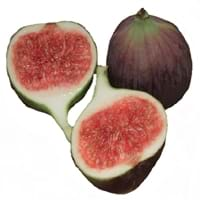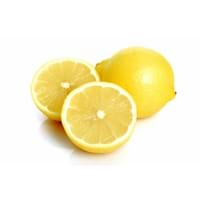Health Benefits
Cancer prevention, Controls blood pressure, Heart care, Increase in haemoglobin, Prevents constipation, Prevents macular degeneration, Reduces nervous tension
Arthritis treatment, Asthma treatment, Cancer prevention, Kidney stone treatment, Prevents constipation, Purging blood, Treatment of rheumatism
General Benefits
Controls blood pressure, Helps in weight loss, Maintains healthy cholesterol level, Strengthens bones
Boosts immune system, Cures headache, Cures fever, Digestive aid, Flu treatment, Maintains healthy cholesterol level, Treatment of common cold
Skin Benefits
Brightens and lightens complexion, Hydrates skin, Skin rejuvenation, Treatment of acne
Heals sunburn, Reduces wrinkles, Skin rejuvenation, Treatment of acne, Treatment of skin diseases
Hair Benefits
Good conditioner, Regulates hair growth, Softening mask
Prevents hair loss, Treatment of dandruff
Allergy Symptoms
Abdominal pains, Anaphylaxis, Coughing, Headaches, Hives, Itching, Nasal congestion, Skin rash, Sneezing, Sore throat, Swelling of hands
Eczema, Hives, Inflammation, Itching, Skin rash, Swelling
Side Effects
Allergic reaction, Skin rash, Possibly unsafe during pregnancy
Diuretic effects, Heart burn, Tooth decay, Chances of sunburn
Best Time to Eat
Best if taken as a breakfast (or empty stomach), Don't consume at night and before bed, Morning time (before lunch)
Along with meal, Best to drink lemon water on an empty stomach., Don't consume at night and before bed
Vitamin B5 (Pantothenic Acid)
Vitamin C (Ascorbic Acid)
Vitamin K (Phyllochinone)
Phytosterol
Not Available
Calories in Fresh Fruit with Peel
Not Available
Calories in Fresh Fruit without Peel
Not Available
Type
Tree fruit
Citrus, Tree fruit
Season
Summer, Winter
All seasons
Varieties
Abyad, Adriatic, Alma, Atreano, Bataglia, Black Bethlehem, Black Madeira, Black Mission, Brown Turkey, Sierra, Calimyrna, Kadota, Deanna, Figoin and Hardy Chicago Fig
Avalon Lemon, Bears Lemon, Buddha's Hand, Bush Lemon, Citron, Eureka Lemon, Dorshapo Lemon, Finger Citron and Fino Citron
Color
Green, Purple, Red
Yellow, Yellowish-orange
Origin
Western Asia
China, India
Soil Type
Clay, Limestone, Loam, Sandy
Well-drained
Climatic Conditions
Dry, Warm
Hot, Sunny
Facts about
- Fig tree is considered as a symbol of abundance, fertility and sweetness.
- The fig is made up of 55% of natural sugar so they are the sweetest fruits.
- Figs are used as a fat substitute in recipes.
- Oil extracted from lemon peels is used for fingerboard of guitars.
- During Renaissance, ladies used lemons to redden their lips.
- Aroms of lemon decreases the level of stress hormones.
Top Producer
Turkey
China
Other Countries
Albania, Algeria, Brazil, Egypt, Iran, Morocco, Syria, Tunisia, United States of America
Argentina, Brazil, India, Iran, Italy, Mexico, Spain, Turkey, United States of America
Top Importer
France
United States of America
Top Exporter
Turkey
Mexico
Botanical Name
Ficus carica
Citrus limon
Synonym
Not Available
Not Available
Subkingdom
Tracheobionta
Tracheobionta
Division
Magnoliophyta
Magnoliophyta
Class
Magnoliopsida
Magnoliopsida
Subclass
Alismidae
Rosidae
Species
Ficus carica
C. limon
Generic Group
Mulberry
Citrus fruit
Compare Fig and Lemon
It is important compare Fig and Lemon as both the fruits have a different nutritional value. Their comparison can be done on the basis of their vitamin and mineral content, calories, benefits as well as characteristics, making it easier for us to choose the best fruit for our diet. Their general health benefits are as follows:
Fig Benefits: controls blood pressure, helps in weight loss, maintains healthy cholesterol level and strengthens bones.
Lemon Benefits: boosts immune system, cures headache, cures fever, digestive aid, flu treatment, maintains healthy cholesterol level and treatment of common cold.
Fruits are also used as a remedy for various hair problems. The hair benefits of Fig are: good conditioner, regulates hair growth and softening mask and hair benefits of Lemon are: prevents hair loss and treatment of dandruff. Some fruits are known to cause allergic reactions. The allergy symptoms of first fruit are: abdominal pains, anaphylaxis, coughing, headaches, hives, itching, nasal congestion, skin rash, sneezing, sore throat and swelling of hands and the symptoms of second fruit are: eczema, hives, inflammation, itching, skin rash and swelling. Get sorted Fig vs Lemon comparison with the help of fruit comparison tool by fruitvs.com.









